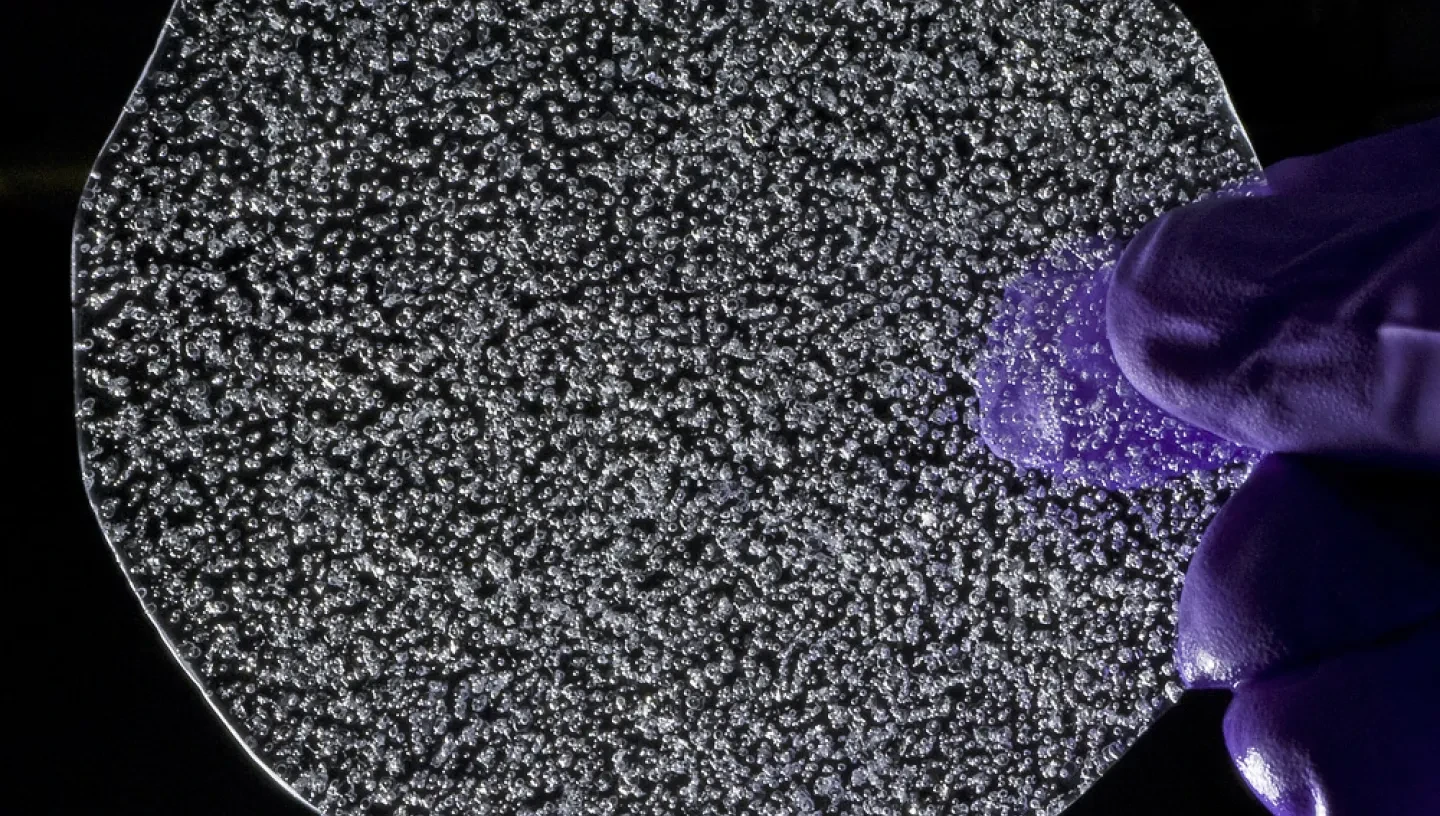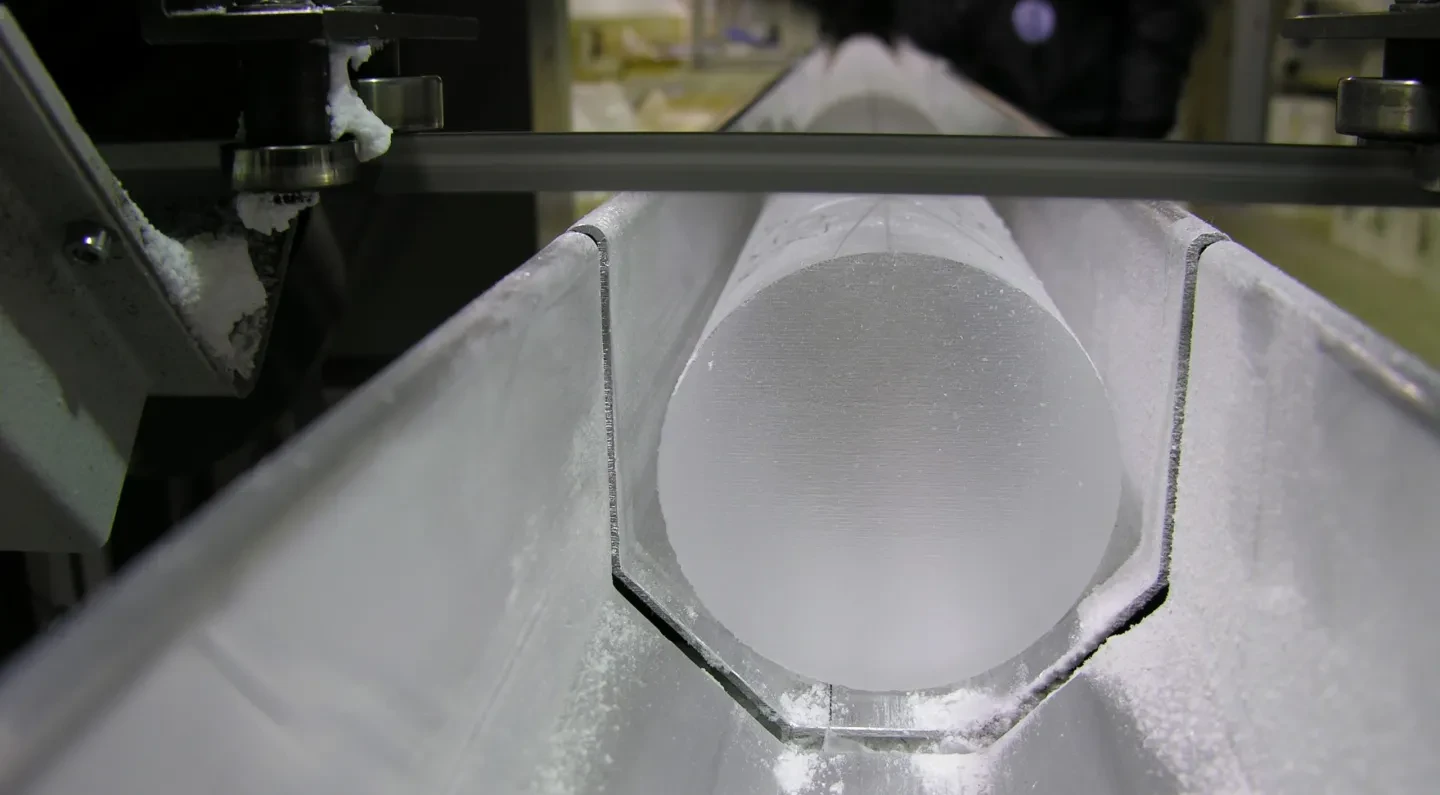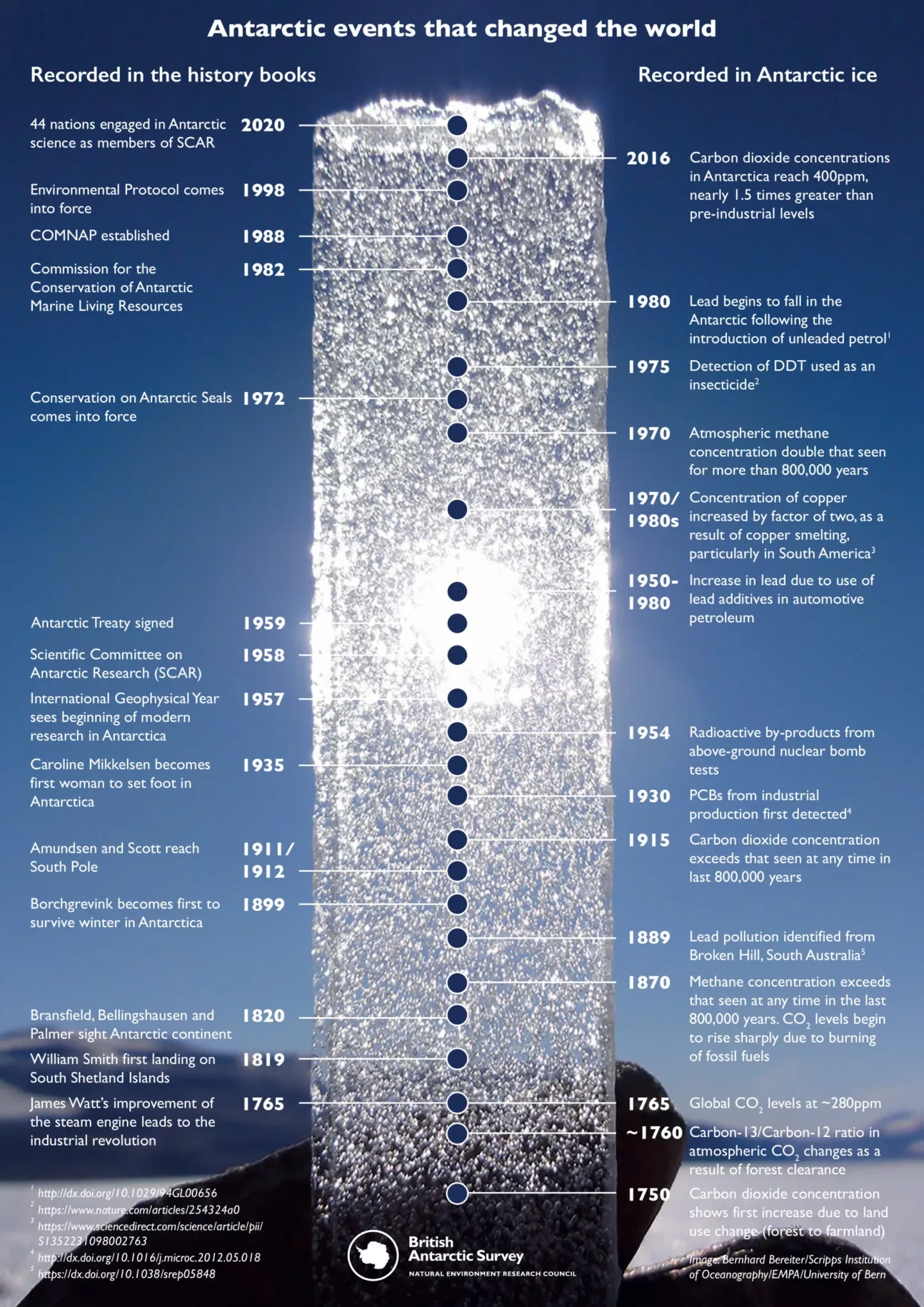
How has Earth's climate changed? How fast are levels of carbon dioxide and other greenhouse gases increasing by, and how do these levels compare with past changes in the planet's atmosphere?
The answers lie in the ice.
What can ice tell us about climate change?
Antarctica has been covered by ice for at least the last six million years.
That means that the snow that fell hundreds of thousands of years ago is still there, compacted and crushed into layers of ice.
These ice layers can tell us a lot about what the Earth was like far back in time. By extracting and analysing the ice, scientists can learn more about past climate conditions and compare them with what's happening today.
This includes key climate change indicators such as global temperatures and ice thickness. The bubbles trapped in the ice can even tell us what the air was like at the time the ice was first formed, helping us to measure the changing levels of greenhouse gases in the atmosphere.
Ice has been described as Earth's "time capsule", containing vital information about what the atmosphere was like at the time the snow fell.
But how do we extract this information?
What is an ice core?
An ice core is a cylinder of ice drilled out of an ice sheet or glacier.
"If you imagine drilling down through the ice sheet, you're literally going back in time," says Isobell Rowell, a University of Cambridge PhD student who has worked with the British Antarctic Survey.
On the polar ice sheets of Greenland and Antarctica, scientists can extract ice cores up to 3km deep, taking us back 123,000 years in Greenland and over 800,000 years in Antarctica.
Each layer of an ice core is derived from snow that fell at a certain time in the past, and each layer is like a time capsule, containing information about what the atmosphere was like at the time the snow fell
Discovering Antarctica
Antarctic ice cores show us that the concentration of carbon dioxide was stable over the last millennium until the early 19th century.
It then started to rise. Now its concentration is now nearly 40 per cent higher than it was before the Industrial Revolution.
Ice cores can also help us identify more recent changes in the Earth's atmosphere, such as the radioactive material released during nuclear testing in the 1950s, or the results of introducing unleaded petrol in the 1980s.
'Dark Bubbles' – ice cores and the art of climate change
For more than six years, contemporary artist Wayne Binitie has explored the ice core laboratory at British Antarctic Survey.
"Although not a library or archive, the laboratory is a significant repository of water, words and stories, articulating the indivisibility of a polar world in extremis," he says.
One of his pieces, 'Dark Bubbles', is now on display in the National Maritime Museum's new gallery Poles Apart: Explore the World of RRS Sir David Attenborough.



